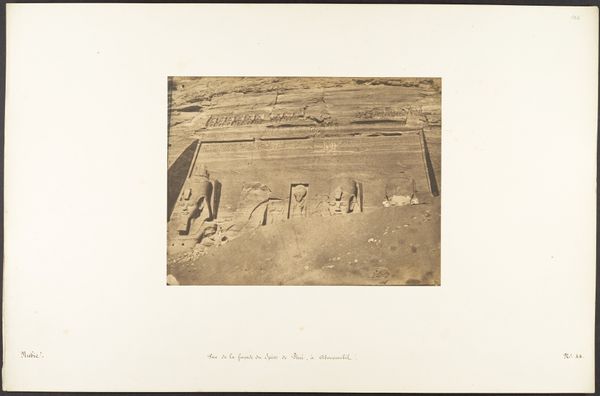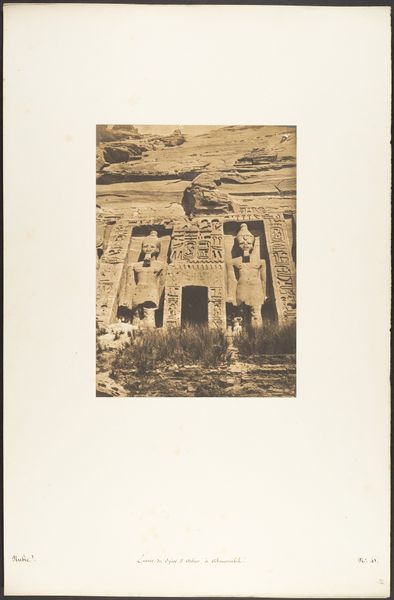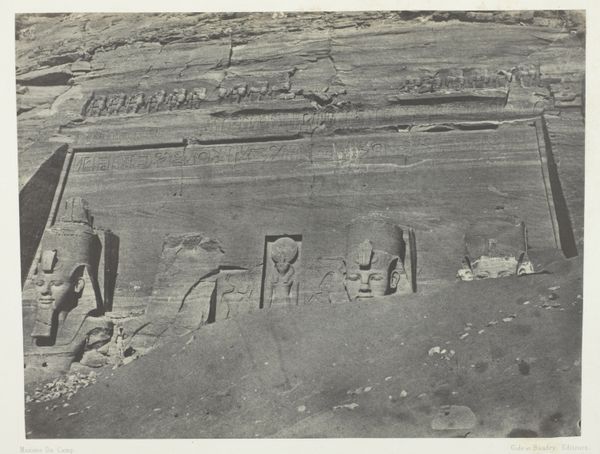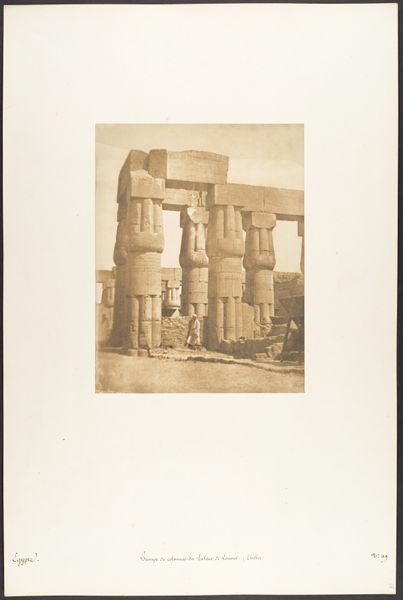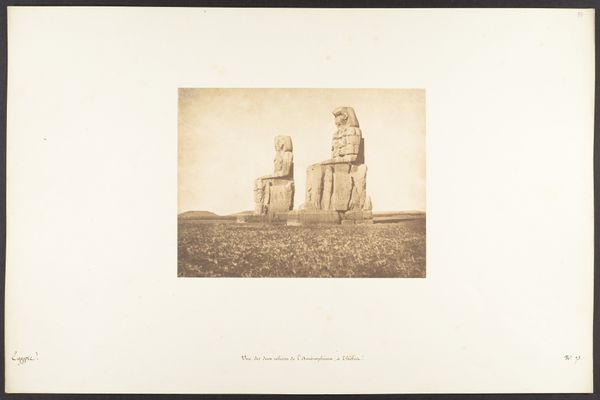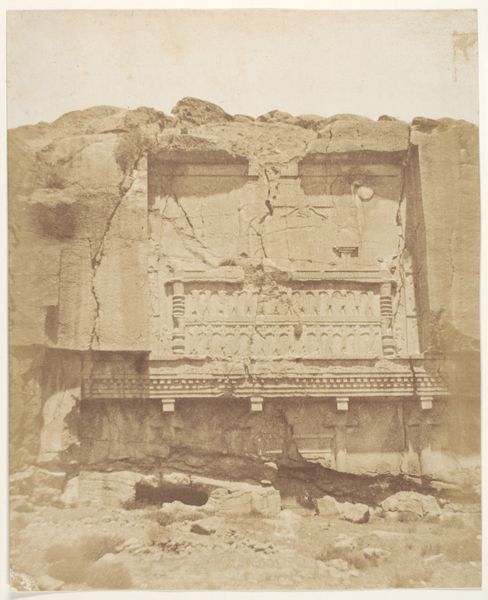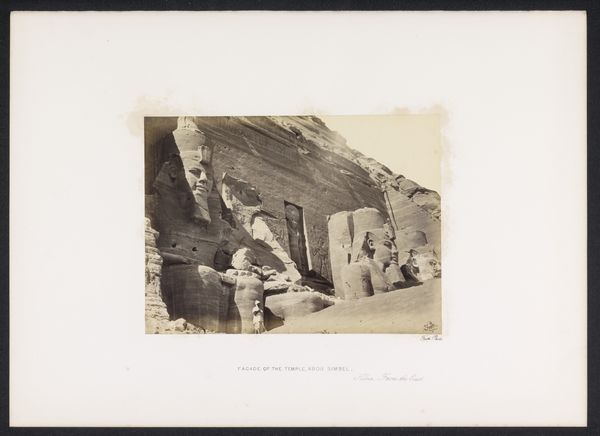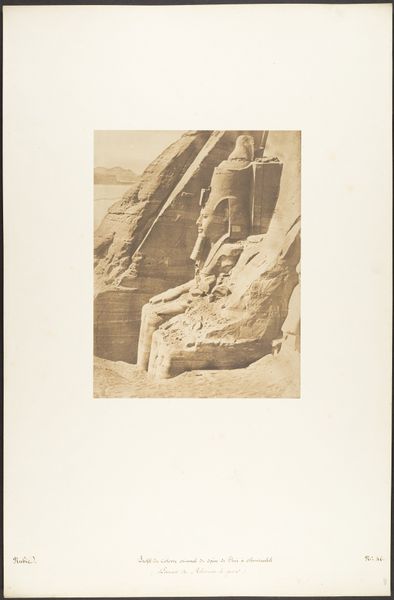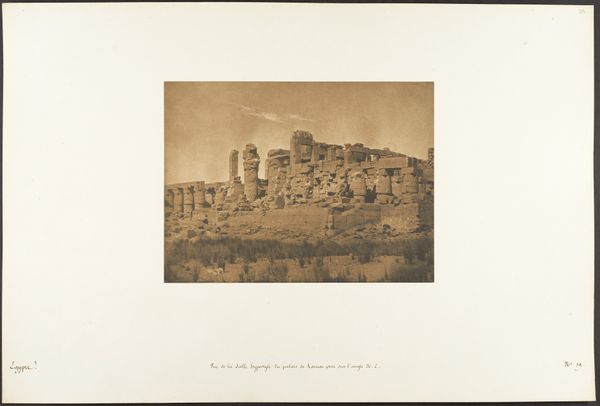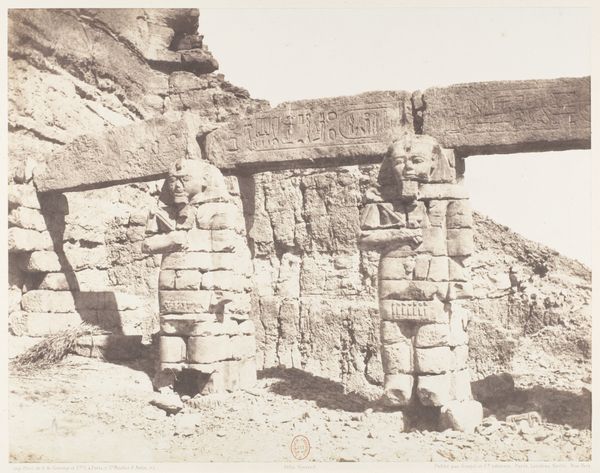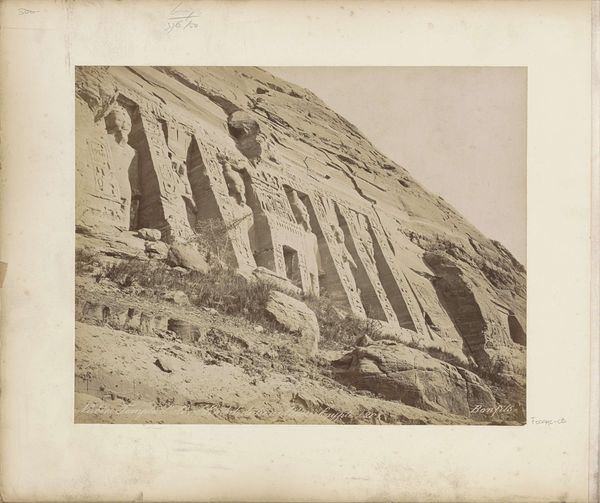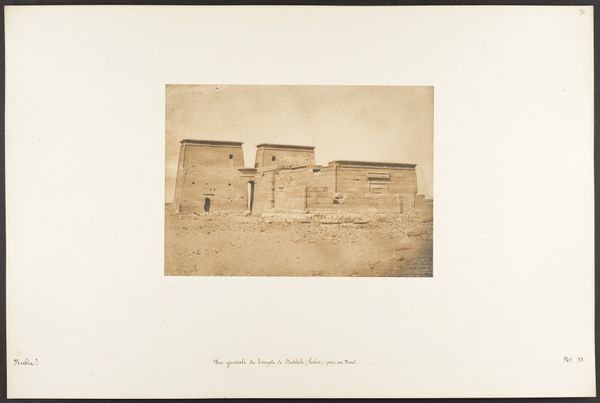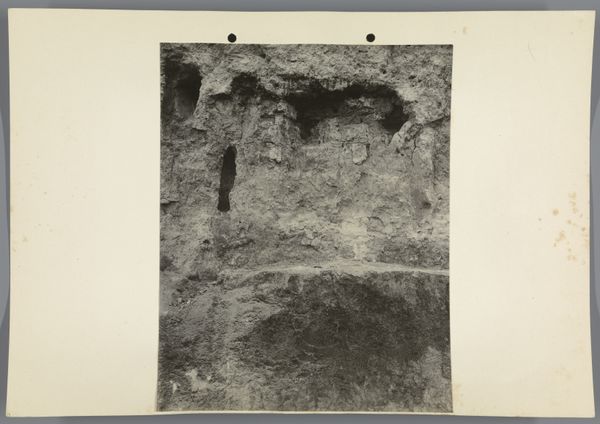
Moitié de la façade du Spéos d'Athor, à Abousembil (partie Septentrionale) 1850
0:00
0:00
print, photography, sculpture, architecture
# print
#
landscape
#
ancient-egyptian-art
#
photography
#
ancient-mediterranean
#
sculpture
#
history-painting
#
architecture
Dimensions: Image: 6 3/4 × 9 1/16 in. (17.2 × 23 cm) Mount: 18 11/16 × 12 5/16 in. (47.5 × 31.2 cm)
Copyright: Public Domain
Editor: Here we have Maxime Du Camp's "Moitié de la façade du Spéos d'Athor, à Abousembil (partie Septentrionale)," a photograph from 1850, capturing a portion of the temple's facade. I'm immediately struck by the monumentality even in this fragment. What can you tell me about its deeper historical relevance? Curator: This photograph, taken during Du Camp's travels with Flaubert, is more than just a pretty picture; it’s a document of a specific moment in the history of Western engagement with Egypt. Consider the power dynamic at play. Here you have a European photographer capturing an ancient Egyptian site. Whose narrative is being prioritized, and how does that influence our understanding? Editor: So, it’s about the gaze, the act of looking and recording? Curator: Precisely. The Western gaze has historically exoticized and appropriated non-Western cultures. How do you think Du Camp's photograph participates in or challenges that tradition? What does it mean to capture an image of such imposing female figures for circulation in Europe? Does it reinforce colonial narratives, or does it offer a point of connection? Editor: I guess I hadn't considered the act of photographing itself as having political implications. I was too focused on the scale and detail captured here. Curator: The detail is remarkable, but it's vital to question the motives behind the image-making. Early photography played a significant role in shaping European perceptions of other cultures. Think about how this image may have been used to justify or romanticize colonial ambitions in Egypt. Whose story is being told, and who gets to tell it? Editor: It certainly gives me a lot to think about regarding the power structures inherent in visual representation. Curator: Exactly. Seeing beyond the aesthetic surface allows us to unpack the complexities of history, representation, and cultural exchange. Editor: Thanks. I'll definitely look at these kinds of photographs differently going forward.
Comments
No comments
Be the first to comment and join the conversation on the ultimate creative platform.
